The Three Skills of Top Trading: Behavioral Systems Building, Pattern Recognition, and Mental State Management
$23.66
| Author(s) | |
|---|---|
| Product Type |
Ebook |
| Format |
|
| Skill Level |
Intermediate to Advanced |
| Pages |
300 |
| Publication Year |
2007 |
| Delivery |
Instant Download |
The Three Skills of Top Trading is Hank Pruden’s definitive framework for mastering the psychological, analytical, and tactical skills required to achieve elite performance in financial markets. This book blends the rich tradition of Wyckoff Methodology, behavioral finance, and pattern recognition into a unified trading philosophy that helps traders think, analyze, and act like true market professionals.
Pruden introduces his famous “Three Skills” model—Mental State Management, Behavioral Trading, and Pattern Recognition & Discretionary Trading—and shows how top traders integrate these disciplines into a cohesive decision-making process. Rather than relying purely on indicators or mechanical signals, Pruden teaches traders how to interpret market structure, understand crowd psychology, and build the internal mindset required to execute consistently under pressure.
A major focus of the book is the Wyckoff Method, including market cycle interpretation, supply/demand dynamics, accumulation/distribution studies, and the identification of high-quality trading zones. Pruden modernizes Wyckoff’s teachings with behavioral finance concepts, enabling traders to recognize manipulation, traps, and smart-money footprints in real time.
Through clear explanations, structured exercises, and real-chart examples, the book reveals how to build a discretionary trading method that is both disciplined and adaptable. From interpreting price-volume relationships to navigating market turns and transitions, Pruden gives traders a complete framework they can apply to stocks, Forex, futures, or crypto.
For anyone who wants to elevate from average trading to professional-level insight, The Three Skills of Top Trading offers a transformative blueprint grounded in timeless market principles and modern psychological science.
✅ What You’ll Learn:
- How top traders manage mindset, emotional regulation, and mental preparation
- The principles of behavioral finance and how cognitive biases influence market behavior
- How to apply the Wyckoff Method: accumulation, distribution, springs, upthrusts, and trend logic
- Using price–volume analysis to identify smart money activity
- Recognizing classical market phases and transitions with precision
- How professional traders create structured routines and trading habits
- Pattern-recognition techniques for discretionary trading
- How to interpret market sentiment and crowd psychology
- Building a practical trading plan using Pruden’s “Three Skills” framework
- Case studies of real market cycles and actionable chart examples
💡 Key Benefits:
- Strengthen emotional control and reduce psychological trading errors
- Gain deeper clarity on market structure and Wyckoff-based price behavior
- Improve timing by identifying accumulation and distribution patterns
- Build a disciplined, repeatable discretionary trading process
- Develop the mental edge and behavioral awareness used by elite traders
- Learn to spot smart money footprints and avoid crowd-driven traps
👤 Who This Book Is For:
This book is ideal for:
- Traders who want to master psychology as well as price action
- Wyckoff traders seeking structured training and deeper interpretation skills
- Swing, position, or intraday traders seeking consistent execution
- Technical analysts who want to incorporate behavioral concepts
- Traders who rely on discretionary setups and want more confidence
- Anyone serious about developing a professional-level trading mindset
📚 Table of Contents:
- Systems Building for the Three Skills of Top Trading
- Behavioral Finance
- The Life Cycle Model of Crowd Behavior
- Wyckoff: The Man, the Method, the Mystique
- The Basic Elements of Charting for the Wyckoff Method
- The Wyckoff Method of Technical Analysis and Speculation
- Anatomy of a Trade
- Trader Psychology and Mental Discipline
- The Composite Man
- Putting It All Together: Ten Principles for a Trader to Live By
The Three Skills of Top Trading By Hank Pruden
14 reviews for The Three Skills of Top Trading: Behavioral Systems Building, Pattern Recognition, and Mental State Management
Clear filtersOnly logged in customers who have purchased this product may leave a review.

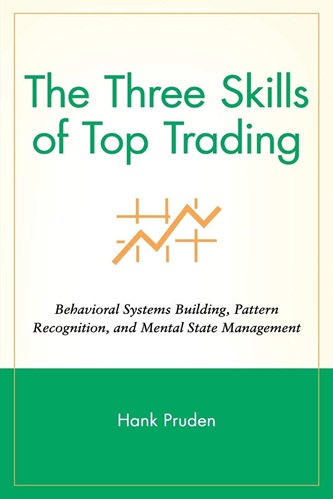

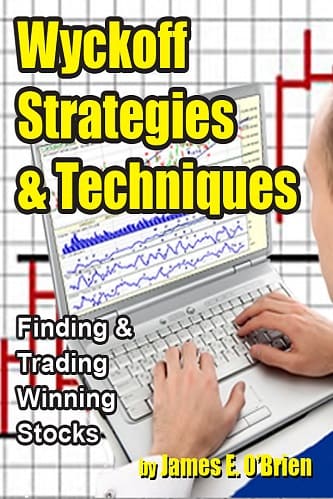

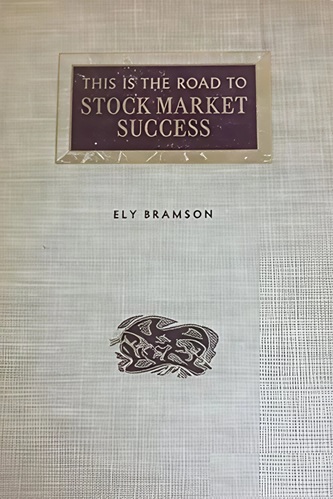

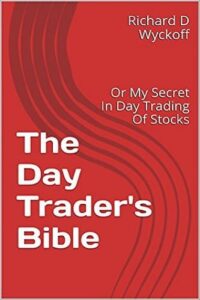
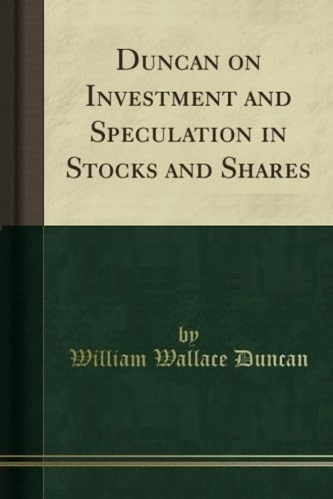
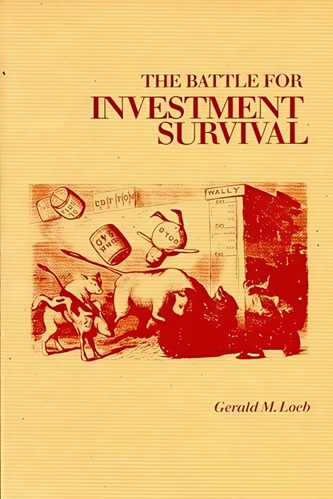
Christopher O’Neal (verified owner) –
Great book
Brynleigh Campbell (verified owner) –
I’ll have to agree with the other 1 star reviewer. This book is very superficial. The book feels like a thrown together group of articles. There is no flow to it. Come to find out that is basically what it is. The author has written a number of articles concerning wyckoff and seems to have put them together into this book. Just download his articles online if interested. All the setups are subjective in nature and are of no use to someone looking for an objective style calling of the markets.
The book is filled with psychobabble dealing more with the psychological shortcomings of traders than anything else. Consider the good in this book as a thin piece of meat between two huge loaves of bread. If that’s the meal which satisfies you then enjoy yourself. Otherwise this book fills no niche or genre that is meaningful and in my opinion had no right to be published. The true value of this book is in the $10 range.
Bianca Nelson (verified owner) –
Prof. Hank Pruden has done it again! His depth of Wyckoff’s knowledge associated with his keen sense of behavioural science illustrated through the Pruden Model, has made this highly acclaimed book one of the nowadays indispensable elements of the investor’s and trader’s arsenal. This book not only describes the psychological aspects of trading but also the “nuts-and-bolts” of Wyckoff’s trading method. Highly recommended for the trader at any level he/she would be, on his way to conquer the learning curve difficulties.
Celine Orr (verified owner) –
Hank Pruden’s masterful book “The Three Skills of Top Trading” is a must-read for serious students of the art and science of trading. It would well serve the newcomer to the world of trading as well as an experienced trader. Whereas many trading gurus say “you must use stop-losses”, Mr. Pruden gives you a three-legged system that creates the knowledge governing the use of a “stop”. In other words, this book contains the “WHY” as well as the “WHAT” that will help users manage their trading effectively, at the buy and the sell ends of the trade.
Thank you Mr. Pruden, for providing me with a foundational book that has already helped me.
Treasure Cox (verified owner) –
I am in the middle of the book, and I already see that it is going to have a solid impact on my trading behavior. I really needed the book.
Anya Curtis (verified owner) –
good book for technical traders
Tripp Hughes (verified owner) –
This book covers everyting a trader needs to understand about the market and how to trade it. This is not a get quick rich book with a few hand-picked examples but a thorugh ook at trading Highly recommended
Maryam Moreno (verified owner) –
A good book describing Wyckoff method and some usefull views about behavioural finance, trading psycology and the method for building a complete trading framework.
Some more examples and case studies would have been usefull.
A knowledge, even basic, of Wyckoff (the wyzard of trading ranges) is a must for every trader and this one is one of the best choices
Benicio Moss (verified owner) –
There are times when it’ll feel like the author is taking the long way around on certain parts but it’s worth hanging in there. I was mainly interested in the section on Wyckoff, and found that section extremely useful. It’s the kind of book I’ll come back to and read again. Highly recommend.
Myles Landry (verified owner) –
I really wanted to give a bit higher rating but in review and after I read my notes I can’t justify that one should be spending this kind of time and money on a book that is, on the margins, worth the effort. There are some very good tips but there is a lot of info that simply is not too useful or worthwhile. I liked the big picture view of trading but there isn’t enough takeaways to make me feel I am going to be that much of a better trader. Try other books that have more consistent and useful content.
Connor Portillo (verified owner) –
I’m a hedge fund manager and this book was very disappointing. Very repetitive, I can’t read anymore the ” the life cycle model “. The firts five chapters are completely useless
Don’t waste your time and money with this book
Nathalie Ingram (verified owner) –
I bought this book because I wanted to learn at the Wyckoff technique. I got disappointed, because it did not give me the practical knowledge I was looking for. I kept it aside, wondering why I wasted my money. But I liked the big picture from the first few chapters I read. Then I later figured out that you will have to learn how to not only depend on price but on other primary market date such as volume, sentiment and time. Then I remembered I had read a section on Hank’s book dealing with this. When I came back to read this book with a different perspective, I realized its value. If you are looking for a practical trading methodology or tactics, then you will likely be disappointed. However, if you take the book for what it was meant to be, framing your mindset in general to give you a big-picture approach to the market, then this book is a MUST READ. Align your objectives with Hank’s objectives in writing the book and you will not be disappointed. I think I am now happy I bought this book, and I keep reading sections of it again and again. Thank you Hank for sharing your extensive knowledge of the market with us!
Dylan Barron (verified owner) –
What can I say? This is, without a doubt, one the very best books on trading I’ve ever read. It is certainly the first trading book I’ve read that has given me a peak behind the curtain and into how the game is really played. Forget things like earnings, P/E ratio, the Fed, Obama, the talking heads on CNBC or anything else. And if you’re a technician like I am, you can likewise forget about using mechanical systems, divining geometric patterns, oscillators and the myriad indicators available. Instead, as Deep Throat apparently said to Bob Woodward, “Follow the money.” Or in this case, follow the volume and the order flow, which will lead you to the money.
Pruden does a wonderful job explaining how the markets are truly guided by the large, savvy operators, who do exactly the opposite of what the public does. In doing so, he sheds light on why the public is always wrong and how to follow the true insiders. But the book is far more than theory. Using some revolutionary models of crowd behavior, Pruden then shows us precisely how to use the tried and true methods of Richard Wyckoff to understand how this behavior manifests itself in the markets and, most importantly, how to trade it.
The result is a systematic way of trading that allows each trader to combine his natural, discretionary instincts with the structure necessary to support his decision making. An added bonus is his section on personal psychology – co-written with the noted trading coach and psychologist, Van Tharp – which will give you tremendous insight into your own mental states, and how to control them for maximum effectiveness.
Whether you subscribe to Wyckoff’s method or not, this book will change the way you see the markets and your own participation in them. Truly, it is a must-read for any trader who is serious about succeeding on his own merits, talents and intelligence. The great traders understand how the markets work, have a method to exploit this understanding and possess incredible self-awareness while they trade. Want to be one them? Buy this book.
Muhammad Buchanan (verified owner) –
his book is written about how three mutually reinforcing links make a complete trader.
1). Pattern Recognition and Discretionary Trading.
Using the Wyckoff method you will see chart representations of how hot stocks are accumulated in bases for long periods of time, have pull backs then break out to new highs. You will also see how they eventually have exhaustion tops that fail to rally and they behind to break down in distribution. The author encourages discretionary trading through experience by being able to identify market action through the past models. I agree completely.
2). Behavioral finance and systems building.
You must be flexible in your trading. You are merely a ship on a sea of opinion. Follow the prevailing sentiment during the middle of the the trend, and go contrary to it at the extreme tops and bottoms. Hope, fear, and greed are the dangers in the market and move the markets in many ways. The action of the stock market is nothing more than a manifestation of mass crowd psychology in action. The Pruden model shows a chart of how accumulation, mark-up, distribution, and markdown works in the market tied to price, volume, sentiment, and time. It truly explains how the market in growth stocks works.
3). The ten tasks of top trading:
Daily self analysis
Daily mental rehearsal
Developing a low risk idea
Stalking
Action
Monitoring
Take profits or abort
Periodic review
Daily briefing
Out
The book covers all the aspects of trading psychology in depth, I found this information to revolutionize my trading and I have read over 100 trading books. It is worth the price of the book alone.
The book also discusses the principle of the “Composite Man”, it is much like Benjamin Graham’s “Mr. Market”. It explains that you must think of the market as one person you are trading against and your job is to understand how he is trading to adjust your trading accordingly.
This book is geared toward traders who rely on patterns and psychology, and will appeal to traders interested in these styles. This book is a key book for all traders who truly want to be successful.